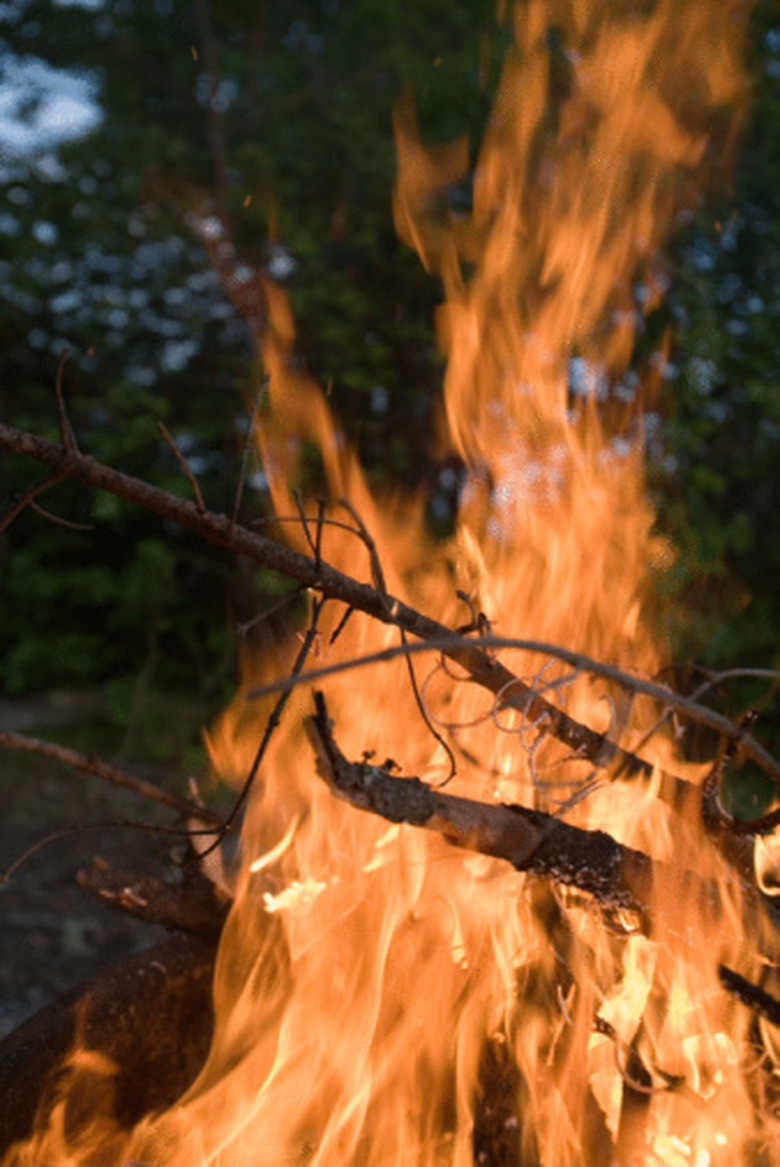The Effects Of Bush Burning On Soil Conditions
Bush burning, whether the result of a wildfire or a controlled burn, affects not only the appearance of the landscape, but the quality of the soil. The landscape may quickly recover after a fire, with fresh new growth and emerging seedlings. However, bush burning has a negative effect on soil conditions, and soil may take much longer to recover, according to the National Resources Conservation Service.
Soil Moisture
Soil Moisture
The impact that bush burning has on soil depends largely on the intensity of the fire and how long it burns. Low-intensity bush burning will affect soil conditions, although not to the degree of a fire involving hardwoods. Bush burning can cause the soil to lose its ability to absorb and retain water. After a fire, the top layer of soil may become water repellent. This causes rain to drain off the soil without absorbing into the ground. The more intense the fire, the greater the chance that the top layer of soil will become water repellent. Once fire consumes bushes, their roots no longer pull moisture into the soil. Additionally, the loss of shade that the bushes once provided means soil moisture is more likely to evaporate.
Erosion
Erosion
Because bush burning may cause the soil to be less stable, erosion is a major concern after a fire. The loss of root systems, coupled with the water runoff caused by soil water repellency, can allow much of the soil to wash away. Shallow-rooted plants are affected by unstable soil, as they depend on vegetation, such as shrubs and bushes, to hold the soil in place.
Soil Temperature
Soil Temperature
Burning bushes exposes the soil to the sun. This lack of shade raises the temperature of the soil. If the fire also caused the soil to become water repellent, the soil will be even warmer due to the lack of moisture. Depending on the ecosystem, this warmer soil may hinder or encourage seed germination. Microbes present in the soil, if not killed by the burning, may not survive in the warmer soil. Many plants depend on soil microbes and, although they may grow, will not thrive if microbes are absent from the soil.
Nutrients
Nutrients
Nitrogen is bound in soil in an organic form. This organic nitrogen releases slowly into the soil and is made available for plants to use. Bush burning changes organic nitrogen into mobile nitrates. Plants are able to use mobile nitrates easier than organic nitrogen, and this accounts for the sudden plant growth that appears after a fire. However, mobile nitrates are more susceptible to being washed away with water runoff. Long-term bush burning creates soil that is lacking in nitrogen. Micronutrients, normally present in soil with decomposing vegetable matter, are lacking in soils after a fire. The combustion process of bush burning also increases soil's pH. This is problematic in ecosystems that rely on low pH values, and native vegetation may have a hard time establishing itself again.
Cite This Article
MLA
Tibbits, Drue. "The Effects Of Bush Burning On Soil Conditions" sciencing.com, https://www.sciencing.com/the-effects-of-bush-burning-on-soil-conditions-13427774/. 21 July 2017.
APA
Tibbits, Drue. (2017, July 21). The Effects Of Bush Burning On Soil Conditions. sciencing.com. Retrieved from https://www.sciencing.com/the-effects-of-bush-burning-on-soil-conditions-13427774/
Chicago
Tibbits, Drue. The Effects Of Bush Burning On Soil Conditions last modified March 24, 2022. https://www.sciencing.com/the-effects-of-bush-burning-on-soil-conditions-13427774/
